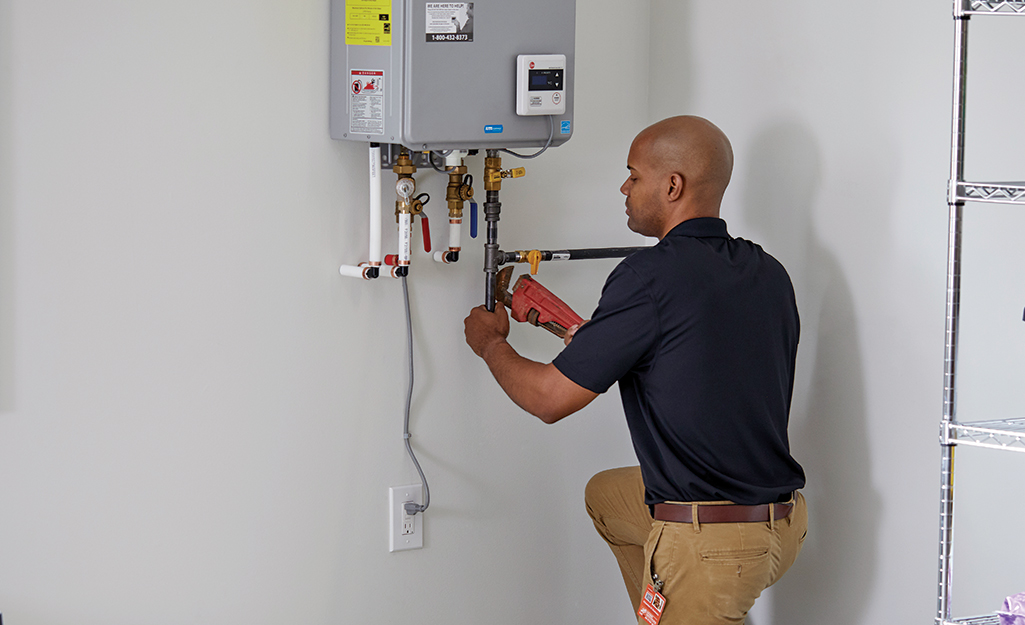We've unearthed the article on How to Maintain a Hot Water Heater in a Few Simple Steps listed below on the internet and reckoned it made sense to discuss it with you in this article.

Warm water is essential for day-to-day comfort, whether it's for a refreshing shower or cleaning dishes. To ensure your hot water system runs efficiently and lasts much longer, regular upkeep is key. This article gives functional tips and understandings on exactly how to keep your home's hot water system to prevent disruptions and pricey fixings.
Introduction
Keeping your home's hot water system could appear challenging, yet with a few straightforward steps, you can ensure it runs efficiently for years to come. This guide covers every little thing from comprehending your hot water system to do it yourself upkeep pointers and knowing when to call in expert help.
Relevance of Preserving Your Hot Water System
Normal maintenance not only extends the lifespan of your warm water system however also guarantees it runs effectively. Neglecting upkeep can cause lowered efficiency, greater energy expenses, and even early failure of the system.
Indications Your Warm Water System Requirements Upkeep
Understanding when your warm water system needs interest can prevent significant issues. Watch out for indicators such as inconsistent water temperature level, strange sounds from the heater, or rustic water.
Recognizing Your Hot Water System
Prior to diving right into upkeep tasks, it's handy to understand the fundamental parts of your hot water system. Normally, this consists of the water heater itself, pipelines, anode poles, and temperature controls.
Monthly Upkeep Tasks
Normal monthly checks can assist capture minor problems prior to they rise.
Purging the Water Heater
Flushing your hot water heater gets rid of sediment accumulation, boosting performance and prolonging its life.
Checking and Replacing Anode Rods
Anode rods avoid rust inside the storage tank. Checking and replacing them when worn is important.
Checking and Changing Temperature Level Settings
Changing the temperature settings guarantees optimal performance and safety.
Do It Yourself Tips for Upkeep
You can do a number of maintenance tasks yourself to keep your warm water system in top condition.
Looking for Leakages
Frequently inspect pipelines and links for leaks, as these can bring about water damages and higher costs.
Checking Pressure Alleviation Valves
Checking the pressure safety valve guarantees it functions appropriately and prevents extreme pressure accumulation.
Shielding Pipes
Shielding hot water pipelines reduces warm loss and can conserve energy.
When to Call a Specialist
While DIY upkeep is advantageous, some problems call for expert experience.
Complex Concerns Calling For Specialist Aid
Instances include major leaks, electrical problems, or if your water heater is consistently underperforming.
Regular Specialist Maintenance Perks
Professional upkeep can consist of comprehensive evaluations, tune-ups, and guaranteeing conformity with safety and security criteria.
Conclusion
Routine maintenance of your home's hot water system is essential for efficiency, long life, and price savings. By adhering to these tips and recognizing when to look for expert help, you can ensure a reliable supply of warm water without unforeseen disruptions.
How to Maintain an Instant Hot Water Heater
- Before tinkering with your hot water heater, make sure that it’s not powered on. You also have to turn off the main circuit breaker and shut off the main gas line to prevent accidents. Also turn off the water valves connected to your unit to prevent water from flowing into and out of the appliance.
- 2. When you’re done, you have to detach the purge valves’ caps. These look like the letter “T” and are situated on either side of the water valves. Doing so will release any pressure that has accumulated inside the valves while at the same time avoid hot water from shooting out and burning your skin.
- 3. When the purge valves’ caps are removed, you have to connect your hosing lines to the valves. Your unit should have come with three hoses but if it didn’t, you can purchase these things from any hardware or home repair shops. You can also get them from retail stores that sell water heating systems. Read the user’s manual and follow it to complete this task properly. When the hosing lines are connected, open the purge port’s valves.
- 4. You should never use harsh chemical cleaners or solutions when cleaning your unit. Make use of white vinegar instead. It should be undiluted and you’ll probably use about 2 gallons.
- 5. Now flush your water heater. This task should probably take about 40 minutes. We can’t give you specific directions for this because the procedure is carried out depending on the type, model and brand of your heater. With that being said, refer to the user’s manual.
- 6. When you’re done draining the unit, you have to turn off the purge port valves again. Remove the hosing lines that you earlier installed on each of the water valves. Put the valve caps (purge port) back in their respective places and be very careful so as not to damage the rubber discs that are found inside these caps.
- 7. Now that everything’s back in place, check your user’s manual again to find out how to reactivate your water heating system.
- 8. Once it is working, turn one of your hot water faucets on just to let air pass through the heater’s water supply pipes. Leave the tap on until water flows smoothly out of it.
https://www.orrplumbing.com/blog/2014/september/how-to-maintain-an-instant-hot-water-heater/

As an avid reader on What Kind of Maintenance Do Water Heaters Need?, I assumed sharing that portion was smart. Feel free to take the time to share this blog entry if you appreciated it. Thank-you for your time spent reading it.
Get Estimate
Comments on “Maintaining Your Home's Hot Water System: Key GuidelinesHow to Prolong the Lifespan of Your Home's Hot Water System Through Maintenance”